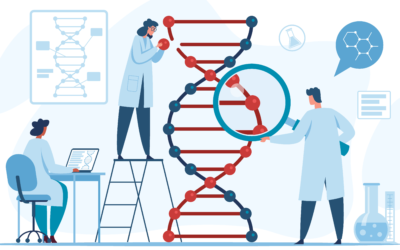The devastation wrought by the 2011 Great East Japan Earthquake was a watershed moment in the nation’s history, prompting a profound reassessment of disaster recovery and public health priorities. Emerging from this tragedy was the Tohoku Medical Megabank Organization (ToMMo), a visionary initiative dedicated to advancing genomic research and healthcare resilience. In a groundbreaking milestone, ToMMo recently announced the sequencing of 100,000 genomes, a feat that positions Japan at the forefront of precision medicine and global genomic research.
A Vision Born of Tragedy
The establishment of ToMMo was a direct response to the medical and infrastructural challenges exposed by the earthquake and tsunami. With funding from the Japanese government and partnerships with academic and medical institutions, ToMMo’s mission was clear: to build a robust biobank and research infrastructure that could address the long-term health needs of disaster-affected populations. This ambitious undertaking laid the groundwork for what would become one of the most comprehensive genomic initiatives in the world.
The 100,000-Genome Milestone
ToMMo’s recent achievement of sequencing 100,000 genomes represents a pivotal moment in genomic science. Leveraging cutting-edge sequencing technology from Illumina, the organization has amassed an unparalleled dataset that includes detailed genetic, environmental, and clinical information. This dataset not only provides insights into the genetic diversity of the Japanese population but also serves as a critical resource for studying rare diseases, identifying genetic risk factors, and developing targeted therapies.
Precision Medicine in Action
One of the most transformative implications of ToMMo’s work is its potential to revolutionize precision medicine in Japan. By integrating genomic data with patient health records, researchers can identify personalized treatment options tailored to an individual’s genetic makeup. For example, pharmacogenomics—the study of how genes influence drug response—is already yielding actionable insights that improve medication efficacy and reduce adverse reactions.
Bridging Global Gaps in Genetic Research
The significance of ToMMo’s achievement extends beyond Japan. Historically, genomic research has been disproportionately focused on populations of European descent, creating gaps in our understanding of genetic variation across different ethnic groups. ToMMo’s dataset provides a crucial counterbalance, enriching global studies with data from an East Asian population and contributing to more equitable healthcare solutions worldwide.
Overcoming Challenges in Genomic Research
ToMMo’s journey has not been without challenges. The ethical considerations surrounding genomic data collection and usage required the development of robust privacy safeguards and informed consent protocols. Additionally, the integration of genomic data into clinical practice necessitates ongoing education for healthcare providers and updates to regulatory frameworks. By addressing these challenges head-on, ToMMo has set a precedent for other nations embarking on similar initiatives.
Practical Applications and Future Directions
The practical applications of ToMMo’s research are vast. From advancing cancer diagnostics to identifying genetic predispositions to chronic diseases, the organization’s work is already influencing clinical practices. Looking ahead, ToMMo plans to expand its collaborations with international research consortia, ensuring that its findings contribute to a global understanding of human health and disease.
Conclusion
The Tohoku Medical Megabank Organization’s achievement of sequencing 100,000 genomes is a testament to the power of scientific innovation born from adversity. By advancing precision medicine and addressing global disparities in genomic research, ToMMo is not only transforming healthcare in Japan but also making a lasting impact on the field of genomics. As the organization continues to push the boundaries of what is possible, it serves as an inspiring model for leveraging science to improve human health.
References
- Illumina. (2024). ToMMo reaches 100K genomes. Retrieved from https://www.illumina.com/company/news-center/feature-articles/ToMMo-reaches-100K-genomes.html





0 Comments